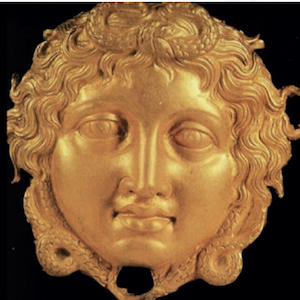The myth of Gorgo/Medusa in ancient written sources

Accepted: April 29, 2024
HTML: 187
All claims expressed in this article are solely those of the authors and do not necessarily represent those of their affiliated organizations, or those of the publisher, the editors and the reviewers. Any product that may be evaluated in this article or claim that may be made by its manufacturer is not guaranteed or endorsed by the publisher.
The present article reports all ancient writers and poets who dealt with the Gorgoneian head and the Gorgon-Medusa related myth presented in a chronological order basically during the 1st millennium B.C. from Homeric epics to late antiquity of Fabius Planciades Fulgentius and Ioannis Malalas in the 5th and 6th c. A.D. Essentially it is a discussion on the ancient written sources, based on the original texts. Especially for the most ancient sources - such as Homer, Hesiod, Cyclic epics – and references were made to known scholars in the field of philology. Particularly critical discussion and comments are made, along with the investigation of the primary ancient writing sources, as well as the related iconography. The final conclusions show the degree of influence of ancient written sources on art, but also vice versa, that is, how much art influenced ancient texts.
How to Cite

This work is licensed under a Creative Commons Attribution-NonCommercial 4.0 International License.
Copyright (c) 2024 The Author(s)
PAGEPress has chosen to apply the Creative Commons Attribution NonCommercial 4.0 International License (CC BY-NC 4.0) to all manuscripts to be published.

 https://doi.org/10.4081/peasa.30
https://doi.org/10.4081/peasa.30



